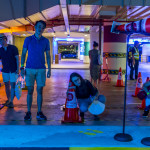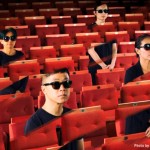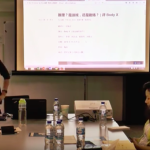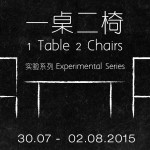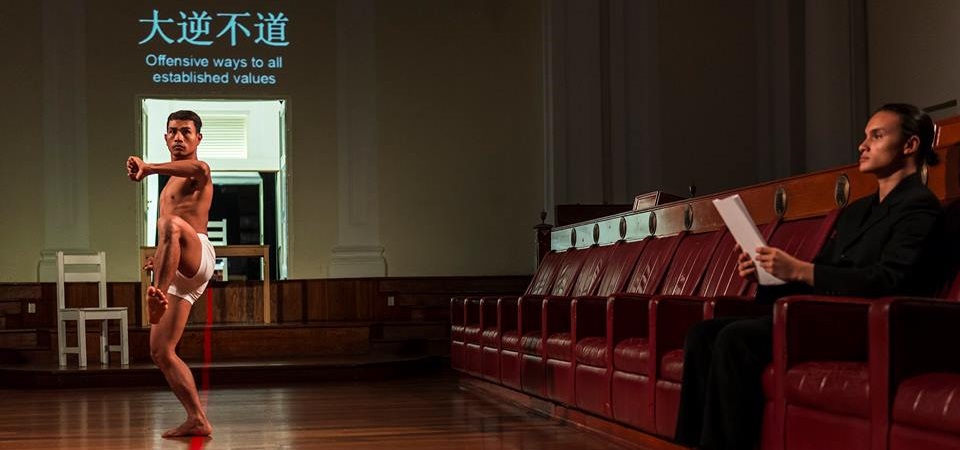
One of the “Triple Bill” performances at the 2017 edition of Southernmost festival. Photo: Tuckys Photography
When we think of a theatre festival, we usually think of a programme line-up of performances, interspersed with a smattering of post-show talks or panel discussions. But in December 2017, the then-newly formed company Emergency Stairs introduced a new breed of theatre festival to the scene: one that is for the artist, and whose intention is to facilitate dialogue between different cultures.
The first edition of Southernmost festival brought together three directors – Liu Xiaoyi (Singapore), Danny Yung (Hong Kong), and Makoto Sato (Japan) – who worked with eight artists to create three performances over the course of two weeks.
The second edition of Southernmost will be taking place at Centre 42 from 3 to 11 November 2018. Similar to last year, the festival will still revolve around the “one table, two chairs” format (which is borrowed from traditional Chinese opera performances), while working with both traditional and contemporary artists. But there will also be a slight shift in the focus this time. We find out more from festival director Xiaoyi.
In what ways do you think Southernmost brings together traditional and contemporary art practices, and why is this important?
When we talk about tradition and contemporary, what are we talking about? The two are usually seen as polar opposites. But I always think they are two fluid concepts. For instance, art forms that we now consider to be traditional were perhaps once very contemporary and very experimental. The experiments we doing today might also become a tradition in the future. The ideas of tradition and contemporary are constantly in flux and will continue to change.
The idea of contemporary theatre is also from a Western-centric perspective. Contemporary is something developed from the Western tradition. Hence, what is our Eastern contemporary? What does it have to do with our tradition? How do we create our contemporary from an Eastern perspective? These questions are leading us to question who we are.
Asian traditional art forms carry hundreds of years of history. They are treasures. Southernmost provides a platform for artists coming from different disciplines to get together. Building on mutual respect and understanding, the artists get to know one another through observation and interaction, and learn from one another. Southernmost is also about fostering closer collaboration and artistic development through different working formats – workshops, showcases, dialogues and creation.
On the other hand, I also feel that crossing boundaries is very important for art making. It creates space for self-reflection and critical thinking. When we are having true dialogue with others and when we are listening to others, we become more aware of what we are doing. In this information age and with increasing globalisation, cross-cultural dialogue is key to development and change.
According to your publicity materials, Southernmost “focuses more on process and artist”. Why do you see this as your answer to the question of how you create “an arts festival for the future”?
Having a new festival is to critique existing festivals. I think that the existing festivals are usually audience-centred and product-driven. So how about we create a festival that focuses more on the process than the production, more on the artistic development than the audience’s entertainment? Production and entertainment are fine. However, I think an arts festival focusing on artists and process is important but lacking in the scene.
It is also an attempt to create a self-questioning and self-reflective festival. This lies at the centre of my practice as well, but by curating Southernmost, I’m also exploring what an arts festival is and can be. I might not have the answer yet, but through criticism and self-criticism, Southernmost aims to be the platform for this experimentation.
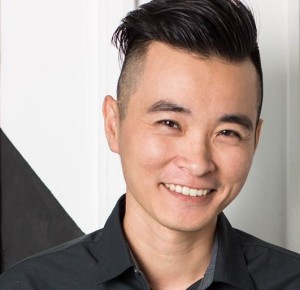
Director Liu Xiaoyi created Southernmost festival in 2017 to focus on the artist and art-making process.
What is the role of the audience in this festival?
When the audience members are watching a show, they are actually experiencing a process. I just think if we can take a step backwards (or forwards), inviting the audience to observe the rehearsals is just an extension of a process. If we see the performance of Southernmost as the curtain call of the bigger/longer performance, then it makes a lot of sense for the audience to watch the performance before the curtain call. So they might understand and appreciate the curtain call in a different way.
On another note, since Southernmost is also about dialogue, I think the audience should be able to take part in all the dialogues in Southernmost, not only rehearsals, but also workshops, showcase, masterclass, open forum and more. Some might say our target audience is the artists. But I will say everyone can be an artist as long as they want to learn, create and experiment. At the same time, everyone is also an audience member while we are watching. I always feel that I’m a lucky audience member when I’m directing. In fact, audience creates theatre with artists when they share the time and space with them. If so, then it can be argued that the rehearsal, open forum, performance, workshops and masterclass, and even the questioning and answering of this interview, are part of a process/performance. In the end, it’s about the exchange between people.
This is also one of the experiments that I want to explore with the audience – the question of how we can create an arts festival for the future, together.
Tell me more about Journey to Nowhere, the new work that will be developed during the festival and showcased on the last two days. What do you envisage this new creation to be, what expectations do you have, and how do you foresee the seven artists going about the process?
Last year there were three works directed by three directors, performed by five artists from different art forms. Through the process, we looked into their bodies, creative methods and process. More importantly, we compared the different cultures of and approaches to theatre. It was a very valuable experience for all of us as artists.
This year, we changed the format into a full length performance directed by me and performed by seven artists. With Journey to Nowhere, I’m thinking about how to expand and deepen this comparative study with these seven artists across Asia. I have designed a research and creation method for Journey to Nowhere, which is closely connected to the spirit of Southernmost. The seven artists will observe one another, and go through a teaching and learning process. I, together with the audience, will observe how they communicate and interact with each other. Definitely there will be lots of discovery, negotiation and criticism. At the end we will witness how they end up sharing the stage. I’m the director, but to a certain extent, I’m the table to link all the chairs together.
Sometime I feel that the exciting part of a journey is the uncertainty of the unknown and the impossible. Every time we choose the unknown, we win more independence, freedom and possibility. Therefore, I always choose a journey to unknown and nowhere.
What inspired the changes in this year’s festival?
Last year, we invited six speakers to share their thoughts in the open forum. Jobina [Tan] talked about the strategy planning of arts venues. Cedric [Chan] talked about the international circuit of the cultural exchange projects. [Lim] Wah Guan and Alvin [Tan] shared the historical context of intercultural experimentation in Singapore. Corrie [Tan] and Alfian [Sa’at] provided critical perspective for intercultural projects.
On the content level, all these helped me form a larger picture relative to what I’m doing. I have a better understanding of what has been done and what has not been done from the historical span and international span. This led to the changes we made for this year’s Southernmost. One question that came up during and after the open forum is how Southernmost is in relation to Singapore. Although I always remind myself to look beyond Singapore and the framework of the “CMIO” culture, I’m also interested to examine and understand more of this city. Therefore, I want to break the conventional format of “one table, two chairs” by casting seven artists in this edition, including four from Singapore.
On the format level, curating and observing the open forum also made me think about the possible development of open forums. In the open forum last year, I borrowed the format of “one table, two chairs” to conduct it. And I saw that the lines between performance and dialogue blurred, and the roles of performers and speakers merged. I found this very interesting – is this the potential format of performance/forum of the future?
By Gwen Pew
Published on 28 September 2018
Southernmost will be happening at Centre 42 from 3 to 11 November 2018. Find out more here and get tickets here.

